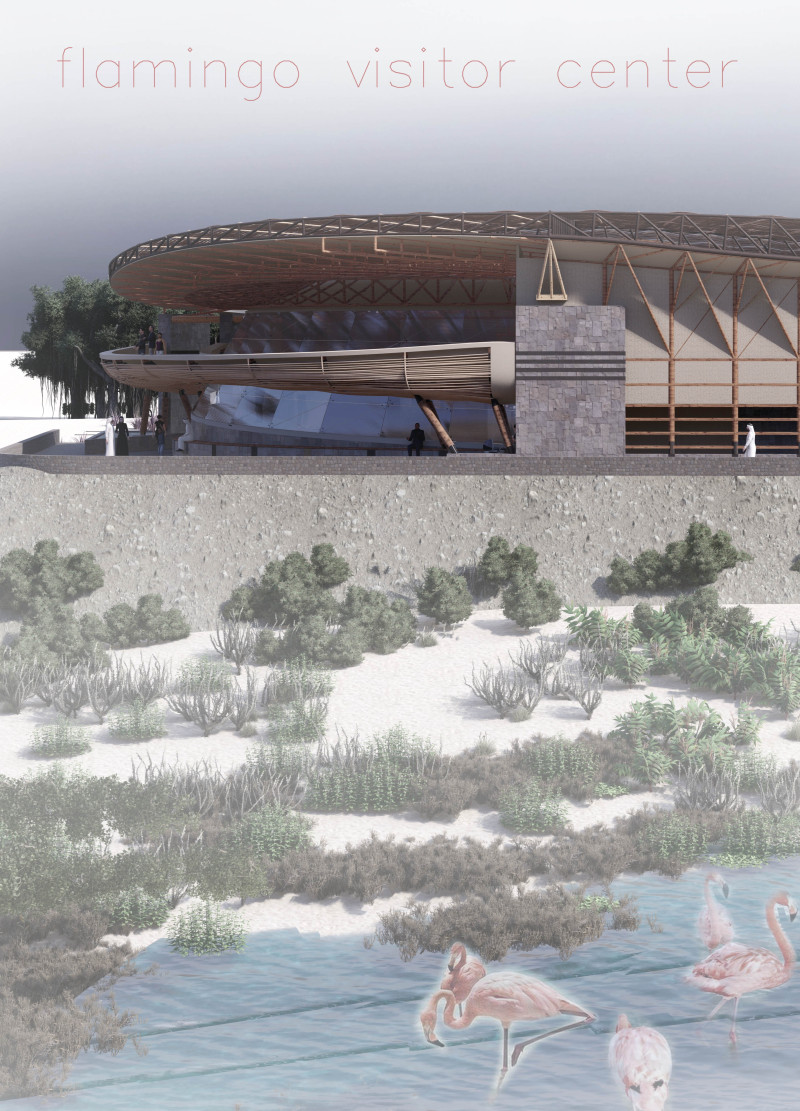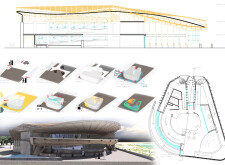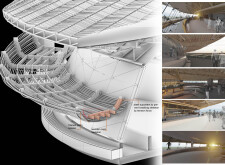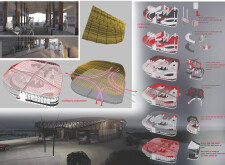5 key facts about this project
Sustainable architecture is a primary consideration throughout the project. The design employs passive cooling strategies, aiming to minimize energy consumption and remain attuned to the coastal climate. The use of natural materials, such as coral stone and timber, reinforces the structure’s environmental context while promoting longevity and aesthetic resonance with the landscape.
Unique Design Approaches
What sets the Flamingo Visitor Center apart is its emphasis on organic forms that mimic natural elements, creating a visual language that enhances its narrative. The curvilinear roof design not only optimizes aesthetic appeal but improves functional performance. By shaping the roof to facilitate natural ventilation and daylighting, the building reduces dependence on artificial lighting and climate control systems.
Another significant aspect is the integration of glass facades. These large openings allow for unobstructed views of the surrounding environment and enable a flow of natural light into interior spaces. This transparency invites inviting interactions with both the landscape and the wildlife, aligning with the project’s educational objectives.
Key Elements of the Design
The spatial organization within the Flamingo Visitor Center is carefully considered to promote seamless movement and engagement. Open areas encourage visitor circulation while providing settings for educational exhibits that convey information about local biodiversity. Outdoor terraces serve as extensions of the interior, designed for gatherings or passive observation of the flamingos.
The selection of materials plays a critical role in tying the architectural design to its geographical location. Coral stone constructs the base, grounding the structure in its context, while palm leaves used in shading devices reflect local flora. Timber elements offer warmth and complement the overall natural aesthetic, while steel supports are judiciously placed to manage structural loads without hindering openness.
Individuals interested in gaining deeper insights into the Flamingo Visitor Center are encouraged to review the architectural plans, sections, and designs. These elements provide a comprehensive understanding of the project’s innovative approaches and functional spaces, illustrating how the design effectively addresses the integration of architecture with its ecological environment.


























